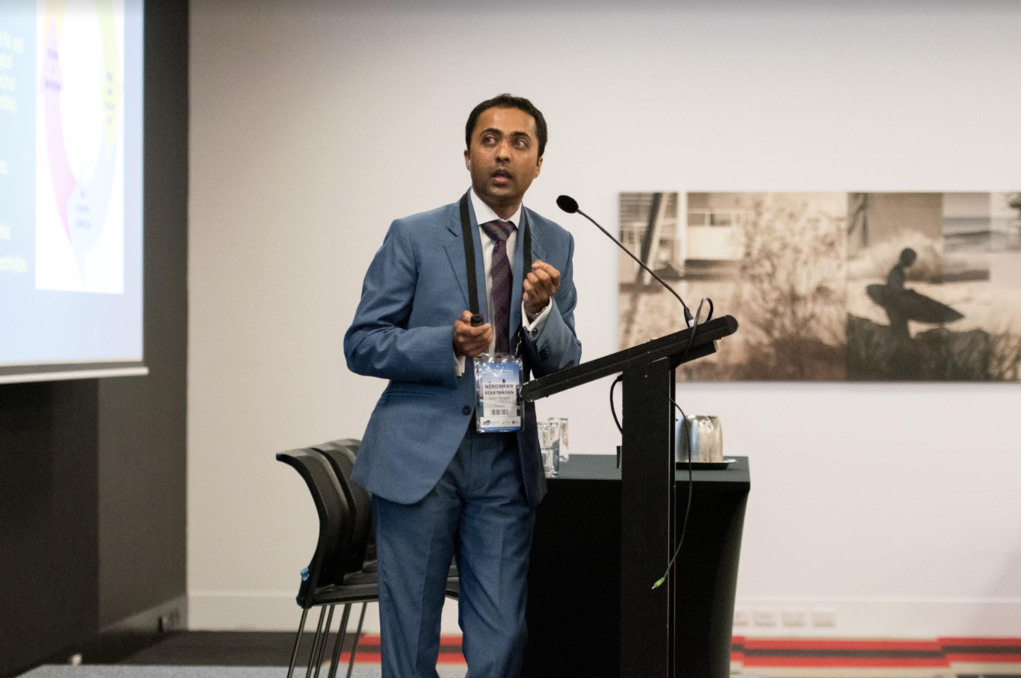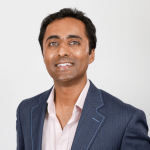
Dr. Niro Sivathasan, International Director of Harley Academy, London, U.K. and aesthetic surgeon in Australia on consistency in education as a hallmark to safety in cosmetic procedures. Harley Academy is a champion in the field, spearheading the future of education in the cosmetic medical industry.
Tell us about the founding of Harley Academy; what are the values behind the education? Regulations affecting the cosmetic medical industry are very variable around the world. In fact, they may be notably different not just between regions, but within regions (e.g. in Europe, France and Germany are well-regulated, but Britain is woefully inadequate) and even within individual countries (e.g. the different American states have different regulations, and there are variations in requirements between the different nations of Britain).
It was clear that independent educational bodies spearheading training that’s based on best-practice guidelines, and, where possible, evidence-based medicine, were in desperate need, in order to further patient safety.
Accordingly, Harley Academy was founded in 2014 by my friend and business partner, Dr. Tristan Mehta, M.D., to address the hiatus in Britain. Harley Academy is Britain’s original educational institute for teaching and mentoring in non-surgical aesthetics, and it has been working intimately with the British government since its inception to champion education in this field.
Promotion of patient safety is, certainly, the single most important value at Harley Academy. This is closely followed by the pursuit of excellence with clinical outcomes, which is increasingly important given the rapidly growing numbers of people wanting both non-surgical and surgical procedures AND those providing such services. Knowledge in safety and artistry – which, in my opinion, is paramount and underpins the structured training which we provide – is instilled in our students, and we, at Harley Academy, are really proud to be such an integral part of this industry.
“Knowledge in safety and artistry – which, in my opinion, is paramount and underpins the structured training which we provide – is instilled in our students, and we, at Harley Academy, are really proud to be such an integral part of this industry.”
What is your main focus in training these future medical professionals? What sets you apart in your efforts? Harley Academy’s main objective is to provide a flexible and realistic approach to postgraduate education. We have, uniquely, a technology-focussed approach to education, which complements, and is potentiated by, our highly qualified education faculty. Trainers must be experienced in order to impart distilled and pragmatic advice to trainees, and I am, again, delighted to be able to say that our educators really hit the mark!
Given the success of our e-education/ technology, medical educational bodies around the world are now working with us to provide their trainees with our training material. This is helping with the standardization of knowledge. We’re also emphasizing that as teachers, we must not only guide those practising in the field, but we must remain abreast of updates, ourselves.
I must add that ‘presently’ in Britain, medical professionals (i.e. doctors) and closely aligned paramedical practitioners (i.e. dentists and nurses) are the primary providers of non-surgical cosmetic interventions, but this situation may change over the next few years due to a paucity of regulations mandating who can provide non-surgical treatments, and consequentially the functioning of the ‘marketplace’ (from producer to end-customer).
How do you adapt to changes within the industry; how do they affect your educational platform and the direction in which you focus your students? Harley Academy was founded in response to the changes in the aesthetics industry. The company’s own evolution is facilitated by continually working with the government and the accrediting bodies to help them to understand the needs of the practitioner community. This feedback coupled with our work with scientists and pharmaceutical companies, allows us to provide practitioners with up-to-date training that incorporates changes to ‘industry best practice’. Bolstering and driving our clinical training are large tech and development teams, both internal and external to our organization, and they are working hand-in-hand with our non-clinical educators to ensure our platform is providing quality education, not just by way of the latest information, but also in a user-friendly manner. The expectations of practitioners are changing and their needs are central to our ‘UX design’.
Based on your experiences, what advances or changes within the industry do you foresee in the future? What are you most excited about? I have been working in the world of aesthetics since 2007, though I qualified as a medical doctor a few years prior to that. In fact, the year in which I started my training in plastic surgery, was also the year that I attended a course on cosmetic medicine (botulinum toxins and soft-tissue fillers)! Plastic surgery encompasses aesthetic surgery and reconstructive surgery, but aesthetic surgery per se, straddles multiple other specialties and a lot of its core competencies are based on innovations and advances at the hands of specialists in other fields such as gynaecology, and otorhinolaryngology. Distinct to cosmetic surgery is aesthetic-/ cosmetic- medicine, and cosmetic medicine has multiple bases, such as dermatology, but it is, very rightly, its own craft. Of course, as with everything in medicine, there is always overlap between specialties.
The discipline of medicine is quite a conservative, and arguably parochial, endeavour, but based on my international clinical experience, and attendances at international meetings as a speaker or delegate, these are the top three changes that I have noted to be occurring in the cosmetic industry:
- Cosmetic medicine and cosmetic surgery are becoming recognized as unique fields, with the creation of formal postgraduate qualifications or board certifications;
- Frivolous attempts at litigation is rising, which means that practitioners must be more discerning with patient selection! Whilst there is increasing awareness and appreciation amongst the public about what may be realistically attained and/ or is realistic, when it comes to unsatisfactory or suboptimal outcomes, regardless of cause or reason, they are also quick to engage ‘ambulance-chasing’ lawyers on a no-win-no-fee basis;
- The public wants procedures that are minimally invasive or have minimal downtime, and this is being fuelled by technological advances in energy-based devices. The cosmetic industry is responding accordingly, with more practices making a greater effort to invest in devices that actually deliver tangible outcomes;
However, perhaps the most practical of my observations is the change in practitioner-behaviour; practitioners (whether medical, nursing, or other, depending on jurisdiction) are forming groups to share knowledge and expertise, and are providing oversight and support to their peers with complications. This is leading to an improvement in the clinical application of available techniques and technologies. However, the danger is working beyond one’s competence, which may be minimized by remembering one’s core training and qualifications – an oculoplastic surgeon is not trained to be a gynaecologist, an E.N.T. (or facial plastic) surgeon is not trained to be a liposuction specialist, and dentists and nurses are not medical, but they may all contribute in their own way to advancing cosmetic practice as a whole.
So, insofar as cosmetic medicine is concerned, I predict that this craft shall become more formalized and unified, and, to this extent, Harley Academy is already working on a disruptive new project to bring together the community… watch this space!
What are some of the more notable treatment options in the industry you’re currently most excited about? There are two emerging areas of great interest. The first being non-surgical facial rejuvenation using a combination approach, such as radiofrequency tightening, lasers, and tissue-repositioning threads (e.g. Silhouette Soft) in combination with ‘next generation’ biostimulatory fillers (e.g. Ellansé). The second area is regenerative medicine employing stem cells, which are harvested from fat or bone marrow. Whilst this is on the frontier of medicine and is currently having opposition from a number of quarters, there is an ever-increasing body of credible science and significant clinical results that provide credence to this endeavour. Of course, the pioneers in this field shall face an uphill battle, and risk being either persecuted or used as pawns by their peers and various regulatory boards (some of which have a track record of such behaviour); however, I do believe that time shall demonstrate the convictions of the pioneers to be correct! During the course of 2017, I came across the impressive philosophies and practices of two surgeons from different parts of the world; eminent Beverly Hills surgeon, Mark Berman, and Andrew Burd, professor of plastic surgery and regenerative medicine, have been producing some very inspiring work!
What about breast augmentation? What are the latest considerations? The current hot topic pertaining to breast implants is about the risk of cancer. There is increasing evidence that a type of lymphoma may be associated with the presence of implants, particularly those implants that are textured. It is believed that bacteria may colonize the surface of implants and given that textured implants have greater surface area, more bacteria are able to live there and this gradually irritates the body enough to cause this critical adverse outcome. It appears that some brands of breast implant have a higher risk of this cancer (‘BIA-ALCL’) – which is ‘not’ breast cancer, by the way. The solution to breast-implant-associated lymphoma is to remove the implant and the scar tissue, or capsule, that forms around foreign bodies that are placed in the body.
Readers should understand why textured implants are sometimes used. This is for two key reasons: to reduce the mobility of the implants in the pocket that is created for it (e.g. to stop implants from rotating around); to reduce the likelihood of tangible capsular contracture, which is a morphological deformation of the scar tissue that surrounds all foreign bodies. Multiple strategies may be employed to minimize the risk of bacterial colonization on breast implant shells.
As with all medical endeavours, the doctor needs to have a blunt discussion with the patient, without giving false reassurance, and patients need to be engaged enough to participate in a discussion about potential complications. Quite simply, anaesthetics and surgery involve risk; if a patient is not able to comprehend, evaluate, retain and consent to these, then the patient is a suboptimal candidate for surgical procedures, and is absolutely not a candidate for elective operations.
Sticking with breast augmentation, for a woman considering treatment, what is the most vital question to ask a practitioner? It is not so much a question; rather, it is whether the surgeon understands the needs of the patient. I take particular pride in establishing a rapport with my patients, and developing insight into their psychology and their needs and reasons for seeing me. Part of my discussion involves imparting the pros and cons of what they are seeking, and also encouraging patients to understand basic concepts of beauty. For instance, when a woman sees me for breast augmentation surgery, I discuss an ‘hourglass shape’ when viewed from the front, and a ‘lazy s’ when viewed from the side.
The proverbial ‘playing field’ for cosmetic surgery, and particularly for breast implants, is a highly emotive one. Journalists morph into even greater sensationalists, the media, as a whole, jumps on the bandwagon that is all-too-often fuelled by hype than by science, let alone logic, and endorsements are by celebrities instead of by clinicians. The consequences of such, include patients having unrealistic expectations, society having a propensity to be easily triggered (e.g. into fear), and even unreasonable attempts at litigation against large companies.
The reality is that aesthetic medicine and surgery are, essentially, lifestyle decisions, and it is imperative, therefore, that we, as physicians and surgeons, make a concerted effort to develop insight into the drivers, needs, and reasons behind patients seeking our assistance and treatments. For example, understanding the patient’s current job and future aspirations are important in helping the patient to choose the most suitable option that is available. Indeed, as I reinforce to all of my trainees and delegates, sometimes, the best thing we can do, is to refuse treatment altogether.
 Dr. Niroshan Sivathasan BSc (Hons), MB, BS (Lond), DRCOG, GradDipAesthMed (UK), PGCert BA, MRCS (Eng), AFACP, FCPCA. Board Certified (AAAM) in Aesthetic Medicine.
Dr. Niroshan Sivathasan BSc (Hons), MB, BS (Lond), DRCOG, GradDipAesthMed (UK), PGCert BA, MRCS (Eng), AFACP, FCPCA. Board Certified (AAAM) in Aesthetic Medicine.
Dr. Niro Sivathasan is an experienced, internationally licensed, aesthetic surgeon. He completed his bachelor’s and medical degrees from King’s College London and University College London, respectively. His postgraduate qualifications in surgery and aesthetic medicine were also gained in England, with rotations across numerous prestigious teaching hospitals in London and postgraduate training with The Royal College of Surgeons of England, prior to moving to Australia to pursue a higher fellowship in cosmetic surgery to build upon his training in plastic surgery.
In addition to his surgical work in cosmetic and restorative surgery, Dr. Niro has a particular interest in non- and minimally- invasive aesthetics of the face and trunk, and is a senior trainer for the pharmaceutical and medical devices industries.
Dr. Niro has experience performing surgeries in a number of countries, and has published over 35 medical articles, written book chapters, international educational guides, spoken at conferences around the world, is a reviewer and editorial committee-member for various medical journals, and presides as an expert for various organizations covering non-surgical medical treatments.


